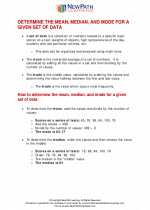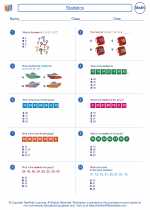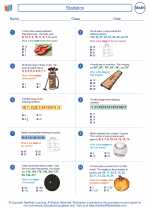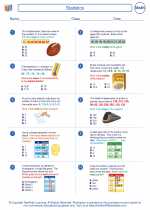Study Guide: Combine the Samples
Introduction
When we combine samples in mathematics, we are essentially merging or bringing together different sets of data. This is a common practice in statistics and probability, as well as in practical scenarios such as mixing ingredients or combining resources. In this study guide, we will explore the different methods and considerations for combining samples.
Methods of Combining Samples
There are several methods for combining samples, depending on the context and the nature of the data. Some common methods include:
- Union of Sets: In set theory, the union of two or more sets is the combination of all unique elements from each set.
- Simple Addition: When dealing with numerical data, such as measurements or quantities, samples can be combined by simple addition.
- Averaging: In some cases, it is appropriate to combine samples by calculating their average or mean.
- Weighted Averages: When each sample has a different level of importance or significance, a weighted average can be used to combine them.
Considerations for Combining Samples
Before combining samples, it is important to consider the following factors:
- Data Type: Is the data categorical or numerical? Different data types may require different methods of combination.
- Sample Size: How many elements are in each sample? Larger samples may have a different impact when combined with smaller samples.
- Weighting: Are all samples equally important, or do some samples carry more weight in the combination process?
- Context: What is the purpose of combining the samples? The context of the problem or scenario can influence the method of combination.
Examples
Let's work through a few examples to illustrate the process of combining samples:
Example 1: Union of Sets
Sample A: {red, green, blue}
Sample B: {blue, yellow}
The union of these two sets is the combination of all unique elements: {red, green, blue, yellow}.
Example 2: Simple Addition
Sample A: 5, 8, 3
Sample B: 2, 4, 6
By adding corresponding elements, we get the combined sample: 7, 12, 9.
Example 3: Weighted Averages
Sample A (weighted by 2): 10, 15, 20
Sample B (weighted by 1): 5, 10, 15
The weighted average is calculated as: ((10*2) + (15*2) + (20*2) + (5*1) + (10*1) + (15*1)) / (2+2+2+1+1+1) = 14.17
Conclusion
Combining samples is a fundamental concept in mathematics and statistics, with applications in various fields. By understanding the methods and considerations for combining samples, we can effectively analyze and interpret combined data sets.
[Combine The Samples] Related Worksheets and Study Guides:
.◂Math Worksheets and Study Guides Sixth Grade. Statistics

 Worksheet/Answer key
Worksheet/Answer key
 Worksheet/Answer key
Worksheet/Answer key
 Worksheet/Answer key
Worksheet/Answer key
 Worksheet/Answer key
Worksheet/Answer key
 Worksheet/Answer key
Worksheet/Answer key
 Worksheet/Answer key
Worksheet/Answer key
